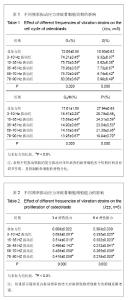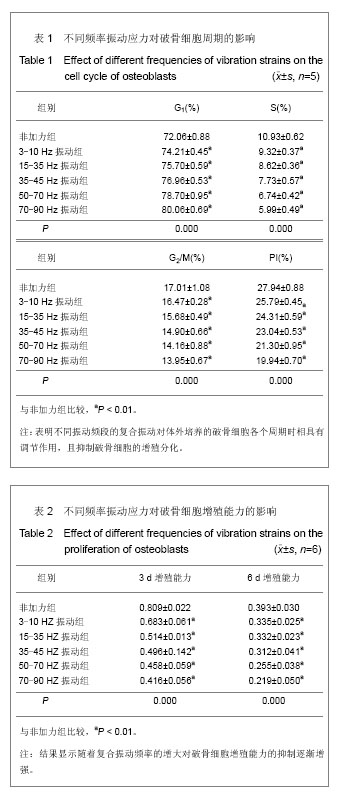| [1] |
Tang Hui, Yao Zhihao, Luo Daowen, Peng Shuanglin, Yang Shuanglin, Wang Lang, Xiao Jingang.
High fat and high sugar diet combined with streptozotocin to establish a rat model of type 2 diabetic osteoporosis
[J]. Chinese Journal of Tissue Engineering Research, 2021, 25(8): 1207-1211.
|
| [2] |
Li Zhongfeng, Chen Minghai, Fan Yinuo, Wei Qiushi, He Wei, Chen Zhenqiu.
Mechanism of Yougui Yin for steroid-induced femoral head necrosis based on network pharmacology
[J]. Chinese Journal of Tissue Engineering Research, 2021, 25(8): 1256-1263.
|
| [3] |
Hou Guangyuan, Zhang Jixue, Zhang Zhijun, Meng Xianghui, Duan Wen, Gao Weilu.
Bone cement pedicle screw fixation and fusion in the treatment of degenerative spinal disease with osteoporosis: one-year follow-up
[J]. Chinese Journal of Tissue Engineering Research, 2021, 25(6): 878-883.
|
| [4] |
Li Shibin, Lai Yu, Zhou Yi, Liao Jianzhao, Zhang Xiaoyun, Zhang Xuan.
Pathogenesis of hormonal osteonecrosis of the femoral head and the target effect of related signaling pathways
[J]. Chinese Journal of Tissue Engineering Research, 2021, 25(6): 935-941.
|
| [5] |
Jiang Xin, Qiao Liangwei, Sun Dong, Li Ming, Fang Jun, Qu Qingshan.
Expression of long chain non-coding RNA PGM5-AS1 in serum of renal transplant patients and its regulation of human glomerular endothelial cells
[J]. Chinese Journal of Tissue Engineering Research, 2021, 25(5): 741-745.
|
| [6] |
Xiao Fangjun, Chen Shudong, Luan Jiyao, Hou Yu, He Kun, Lin Dingkun.
An insight into the mechanism of Salvia miltiorrhiza intervention on osteoporosis based on network pharmacology
[J]. Chinese Journal of Tissue Engineering Research, 2021, 25(5): 772-778.
|
| [7] |
Liu Bo, Chen Xianghe, Yang Kang, Yu Huilin, Lu Pengcheng.
Mechanism of DNA methylation in exercise intervention for osteoporosis
[J]. Chinese Journal of Tissue Engineering Research, 2021, 25(5): 791-797.
|
| [8] |
Nie Shaobo, Li Jiantao, Sun Jien, Zhao Zhe, Zhao Yanpeng, Zhang Licheng, Tang Peifu.
Mechanical stability of medial support nail in treatment of severe osteoporotic intertrochanteric fracture
[J]. Chinese Journal of Tissue Engineering Research, 2021, 25(3): 329-333.
|
| [9] |
Zhong Yuanming, Wan Tong, Zhong Xifeng, Wu Zhuotan, He Bingkun, Wu Sixian.
Meta-analysis of the efficacy and safety of percutaneous curved vertebroplasty and unilateral pedicle approach percutaneous vertebroplasty in the treatment of osteoporotic vertebral compression fracture
[J]. Chinese Journal of Tissue Engineering Research, 2021, 25(3): 456-462.
|
| [10] |
Zhu Yun, Chen Yu, Qiu Hao, Liu Dun, Jin Guorong, Chen Shimou, Weng Zheng.
Finite element analysis for treatment of osteoporotic femoral fracture with far cortical locking screw
[J]. Chinese Journal of Tissue Engineering Research, 2021, 25(24): 3832-3837.
|
| [11] |
Yang Caihui, Liu Qicheng, Dong Ming, Wang Lina, Zuo Meina, Lu Ying, Niu Weidong.
Serine/threonine protein kinases can promote bone destruction in mouse models of chronic periapical periodontitis
[J]. Chinese Journal of Tissue Engineering Research, 2021, 25(23): 3654-3659.
|
| [12] |
Feng Guancheng, Fang Jianming, Lü Haoran, Zhang Dongsheng, Wei Jiadong, Yu Bingbing.
How does bone cement dispersion affect the early outcome of percutaneous vertebroplasty
[J]. Chinese Journal of Tissue Engineering Research, 2021, 25(22): 3450-3457.
|
| [13] |
Liu Chang, Li Datong, Liu Yuan, Kong Lingbo, Guo Rui, Yang Lixue, Hao Dingjun, He Baorong.
Poor efficacy after vertebral augmentation surgery of acute symptomatic thoracolumbar osteoporotic compression fracture: relationship with bone cement, bone mineral density, and adjacent fractures
[J]. Chinese Journal of Tissue Engineering Research, 2021, 25(22): 3510-3516.
|
| [14] |
Huo Hua, Cheng Yuting, Zhou Qian, Qi Yuhan, Wu Chao, Shi Qianhui, Yang Tongjing, Liao Jian, Hong Wei.
Effects of drug coating on implant surface on the osseointegration
[J]. Chinese Journal of Tissue Engineering Research, 2021, 25(22): 3558-3564.
|
| [15] |
Jiang Shengyuan, Li Dan, Jiang Jianhao, Shang-you Yang, Yang Shuye.
Biological response of Co2+ to preosteoblasts during aseptic loosening of the prosthesis
[J]. Chinese Journal of Tissue Engineering Research, 2021, 25(21): 3292-3299.
|

